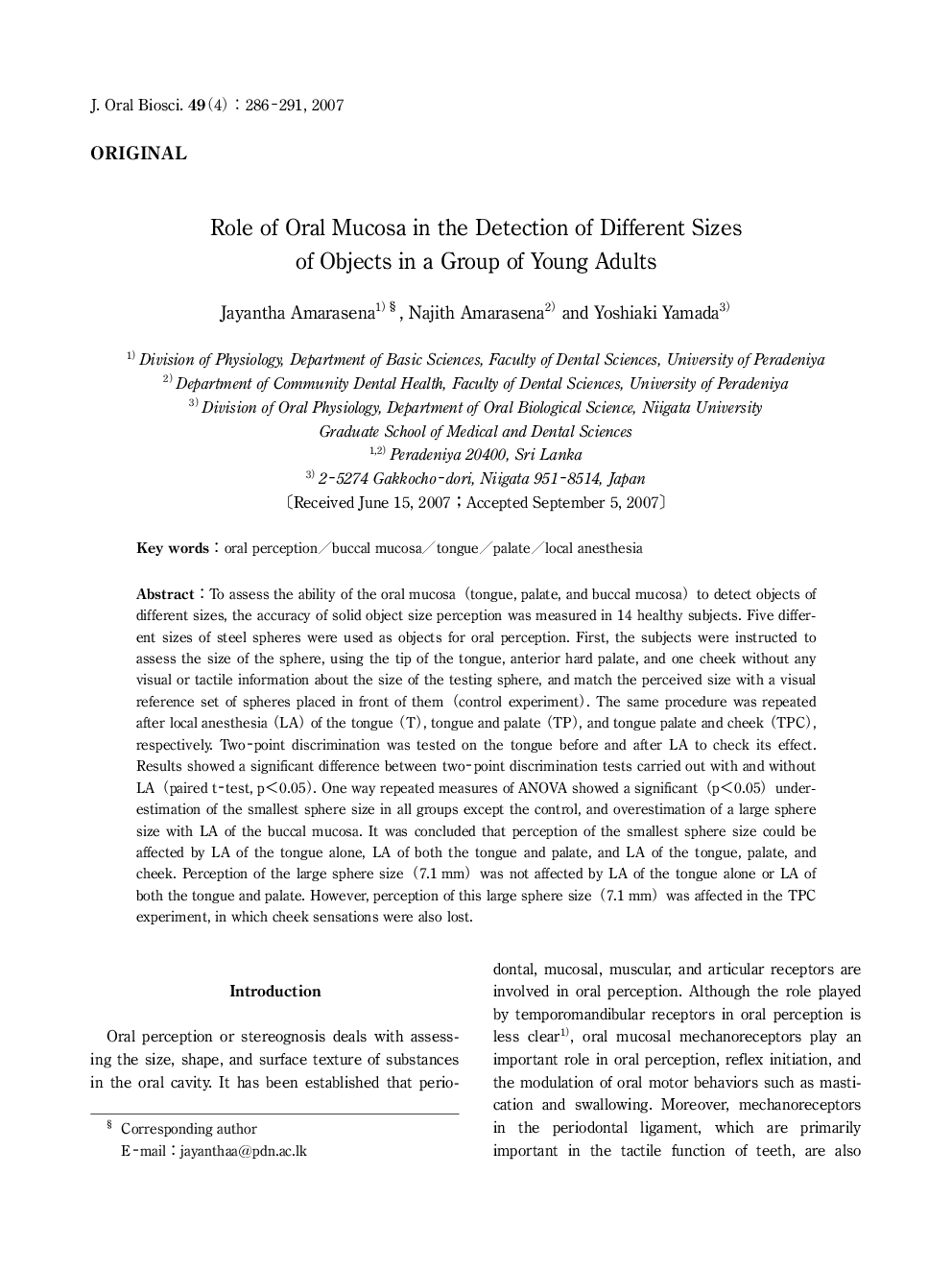| Article ID | Journal | Published Year | Pages | File Type |
|---|---|---|---|---|
| 2777081 | Journal of Oral Biosciences | 2007 | 6 Pages |
To assess the ability of the oral mucosa (tongue, palate, and buccal mucosa) to detect objects of different sizes, the accuracy of solid object size perception was measured in 14 healthy subjects. Five different sizes of steel spheres were used as objects for oral perception. First, the subjects were instructed to assess the size of the sphere, using the tip of the tongue, anterior hard palate, and one cheek without any visual or tactile information about the size of the testing sphere, and match the perceived size with a visual reference set of spheres placed in front of them (control experiment). The same procedure was repeated after local anesthesia (LA) of the tongue (T), tongue and palate (TP), and tongue palate and cheek (TPC), respectively. Two-point discrimination was tested on the tongue before and after LA to check its effect. Results showed a significant difference between two-point discrimination tests carried out with and without LA (paired t-test, p<0.05). One way repeated measures of ANOVA showed a significant (p<0.05) underestimation of the smallest sphere size in all groups except the control, and overestimation of a large sphere size with LA of the buccal mucosa. It was concluded that perception of the smallest sphere size could be affected by LA of the tongue alone, LA of both the tongue and palate, and LA of the tongue, palate, and cheek. Perception of the large sphere size (7.1 mm) was not affected by LA of the tongue alone or LA of both the tongue and palate. However, perception of this large sphere size (7.1 mm) was affected in the TPC experiment, in which cheek sensations were also lost.
